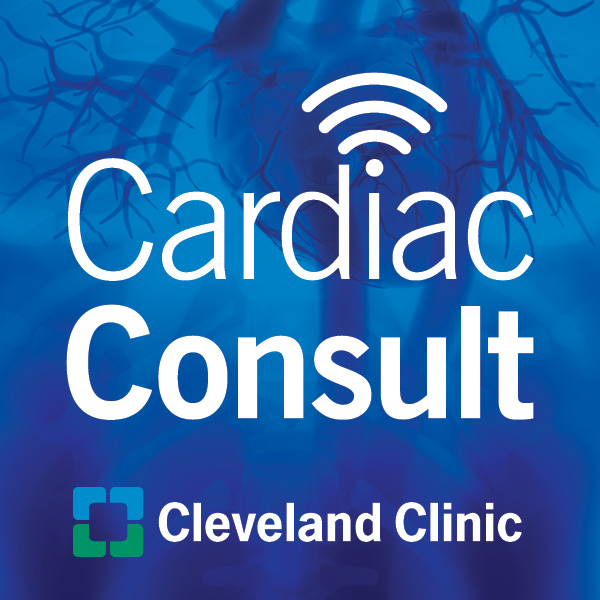Medical Management of Infective Endocarditis

Treatment and management of infective endocarditis (IE) requires a multidisciplinary approach. Steven Gordon, MD, provides an overview of medical management of IE from an infectious disease lens.
Learn more about the Endocarditis Center at Cleveland Clinic
Subscribe: Apple Podcasts | Podcast Addict | Buzzsprout | Spotify
Medical Management of Infective Endocarditis
Podcast Transcript
Announcer:
Welcome to Cleveland Clinic Cardiac Consult, brought to you by the Sydell and Arnold Miller Family Heart, Vascular and Thoracic Institute at Cleveland Clinic.
Steven Gordon, MD:
I think I represent what we would call the third branch of treatment of endocarditis and addiction. There's antibiotics, there's surgery and obviously there's treatment of the addiction.
I think we've developed such good experience here, and I sit with these colleagues, many of whom I see each day when we are rounding, but there's medical treatment, surgical treatment in what we would say now, treatment of infective endocarditis in people with substance use disorder. I think from the clinical side, unless it's diagnosed at an early stage, the most effective treatment for infective endocarditis in all these cases is going to require surgery. And again, remember, 50 percent of patients diagnosed with endocarditis, regardless, are going to end up in surgery, and we're blessed that we have surgeons that actually like to operate and will operate.
Now, I'm not going to go through, how can I say the antibiotics, but as Tom Frazier likes to say, we're pretty much a ceftriaxone-vancomycin group. We know how to use Avycaz and other things, but basically, it's the antibiotics that are not that complicated in this regard. Their biggest pathogens are going to be strep viridans. That's ceftriaxone or penicillin. We will see staph aureus. Occasionally, we're going to see some HACEKs and gram-negatives and some unusual things.
In injection drug use, obviously, we can come up with things like serration, some gram-negatives. But this is really our stable, and it's not that complicated in terms of duration. In terms of what's new, we are beginning to utilize what we call the long-acting lipopeptides for certain organisms and gram-positives. What the advantage here is after surgery, we can get away with one dose before they leave the hospital and another dose in about two weeks. That, although those studies are ongoing, is probably another way forward in terms of lineless delivery of antimicrobials. This is just not for patients with injection drug use. This actually, if you ask any patient, would they prefer to have a PICC line for six weeks or get two injections after discharge is probably the way to go.
The other thing you begin to see is the POET trial, which if you remember, was a bridge to decision in terms of IV. So, these are patients from the Danish study, most of which left-sided endocarditis, appropriate organisms, all of them underwent a TEE at the time of diagnosis and at 14 days, whether they had surgery or not, and if things looked improved, they were randomized to continue with IV or continue with oral. Recently, the five-year follow-up was published and there was no significant difference in these groups.
So, I think our group is not quite ready to give what I'd say POET to all patients, but certainly consideration of patients who have had surgery, which most of us still consider to be the most important antibiotic in source control.
The other thing that I think that was taught to us here is when you look at outcomes, surgery versus not, and all the literature, there are three main factors that we have to take into account whenever we read all these studies. There's survival, there's referral bias and selection bias. We all know that it plays out here every day. Here, of course, survival, that means the patient has to survive long enough that someone like Dr. Unai or Dr. Elgharably is going to come and assess the patient for a candidate. We see many patients here that are not going to be surgical candidates and not survive, don't get that far.
If you get that far, then there has to be referral bias. So, Bo or someone has to refer or say, "Get the surgeon involved," early up there to make a decision on whether or not to operate or not. And after the surgeon gets there and makes that decision, because we always say the decision for surgery is between the surgeon and the patient. We tell our learners, do not write in the chart, "Patient needs surgery or needs this." That's a shared decision, but that's between the surgeon and the patient.
And then if you have surgery, it's selecting. There's a selection bias that goes on even with our surgeons in terms of who's going to be the candidate, who's going to be not, what they're going to do.
These are big factors that are hard to quantitate but happen actually every day here in patients with infective endocarditis in terms of decision for surgery.
When it comes to substance use disorder, injection drug use, this paper was first authored by my colleague Nabin Shrestha. Really, I think it tells the story of where we still are today. And this is what we call that 90-day golden period. These were patients all with endocarditis at the Clinic and what you can see is within the first 90 days, actually, the patients with injection drug use had better outcomes in terms of re-operations and things. And of course, they're relatively younger, they don't have the concomitant other coronary artery disease or things of this nature, but after 90 days, between 90 and 180, the hazards ratio for readmission or relapse was about 10 times the other group. And although we didn't directly study that, I don't think you need to be Einstein to know that what happens there is after all the medical care and the post discharge goes away, if you don't treat the addiction, the addiction is still present and that is really the thing that drives.
And although we talk about relapse here in these studies, if you look at the biggest risk now of people who inject drugs, it's death. And so, we teach our learners, when you take those histories, if you have a patient that is overdosed, that's a huge risk factor for death. Similar to when we take domestic violent histories. If I get a history that a woman's been choked, that is really a warning sign for homicide. So, these are the things that are, I think, right up front and center when we take care of these patients.
Now, again, we honor those who serve and everything else. And again, there's been influence, I think, in the Clinic's experiences, both in publications that we say and also guidance and although this newest guideline is not quite a guideline, it's a white paper, it has Dr. Pettersson in the Cleveland Clinic all over it because it really is focusing on that third leg of treat the addiction. And this is still, I think, the biggest challenge for all of us.
Announcer:
Thank you for listening. We hope you enjoyed the podcast. We welcome your comments and feedback. Please contact us at heart@ccf.org. Like what you heard? Subscribe wherever you get your podcasts or listen at clevelandclinic.org/CardiacConsultpodcast.

Cardiac Consult
A Cleveland Clinic podcast exploring heart, vascular and thoracic topics of interest to healthcare providers: medical and surgical treatments, diagnostic testing, medical conditions, and research, technology and practice issues.



